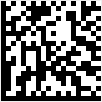Supply of Products for Healthcare (SUPPLY)
0.3.0 - ci-build
Supply of Products for Healthcare (SUPPLY)
0.3.0 - ci-build
Supply of Products for Healthcare (SUPPLY), published by IHE Pharmacy Technical Committee. This guide is not an authorized publication; it is the continuous build for version 0.3.0 built by the FHIR (HL7® FHIR® Standard) CI Build. This version is based on the current content of https://github.com/IHE/pharm-supply/ and changes regularly. See the Directory of published versions
The responsible for the satellite pharmacy has a recurrent task to check the current inventory level at his pharmacy. The satellite pharmacy has 2 inventory locations:
The normal inventory in a dedicated room (labeled “Pharmacy Stock”)
The refrigerator where certain medication is kept in cold storage.
Besides this, the satellite pharmacy is also responsible for the ward inventory, so there are 2 more locations:
Ward G1
Ward P1
Thanks to a procurement directive that mandates lot-traceability, the product packages contain structured barcodes which contain not only the item, but also lot number and expiry date:

According to the central Pharmacy System, which keeps track of the inventory at the hospital, the inventory of the satellite pharmacy is as follows:
| Ward G1 | ||||||
|---|---|---|---|---|---|---|
| Item Code | Item name | Lot | Expiry Date | Available qty | Reorder level | Default order qty |
| . . . | ||||||
| 07612345678900 | XXXXXXXXXX | LL1233223 | 12-2016 | 5 | ||
| LX02374834 | 03-2017 | 8 | ||||
| Total: | 13 | 5 | 10 | |||
| . . . | ||||||
At the end of the year 2014, the pharmacist goes through the inventory locations, and counts the items in stock. The procedure is the same for all locations, and is as below for Ward G1.
The pharmacist starts by identifying the location that is expected to be scanned. This can be done by scanning the barcode for the location.
Since this barcode includes semantics, the inventory system automatically interprets this scanning as a location identification. The remote application requests from the central Pharmacy information about the expected inventory for that location. This will allow to display any discrepancies in real time.
When this information is received, the system notifies the user, who then proceeds to scan the barcode of each item in the same location. The scanning system contains the logic to parse the content of the barcode, obtaining the following information about the scanned products:
4 boxes of item 07612345678900. This box has lot LL1233223 and an expiry date 12-2016.
8 boxes of item 07612345678900. This box has lot LX02374834 and an expiry date 03-2017.
1 box of item 07612345678900. This box has lot LA00012224 and an expiry date 02-2015.
(The last item is an item that is about to expire and was not used earlier.)
After scanning all the items, the remote application displays a summary of the scan results, including the discrepancies - 4 boxes of lot LL1233223, instead of 5, and 1 unexpected box of lot LA00012224.
The pharmacist inspects the package and confirms that the item is indeed of that lot, about to expire. The remote system submits the report to the Pharmacy system, informing of the new inventory status. The Pharmacy system updates this information in its database.
At the end, the Pharmacy System contains the information that the inventory of the satellite pharmacy is as follows:
| Ward G1 | ||||||
|---|---|---|---|---|---|---|
| Item Code | Item name | Lot | Expiry Date | Available qty | Reorder level | Default order qty |
| . . . | ||||||
| 07612345678900 | XXXXXXXXXX | LL1233223 | 12-2016 | 4 | ||
| LX02374834 | 03-2017 | 8 | ||||
| LA00012224 | 02-2015 | 1 | ||||
| Total: | 13 | 5 | 10 | |||
| . . . | ||||||
This information can then be used for any of the purposes in this document, e.g., resupply, recall, etc.